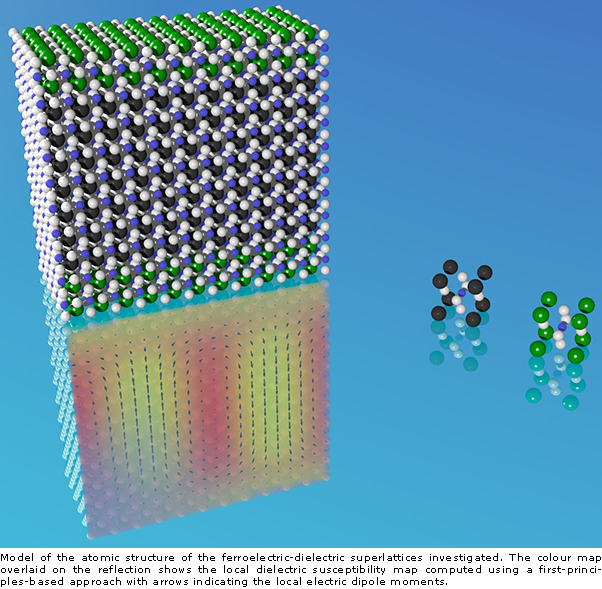A positive step towards negative capacitance… towards more energy-efficient transistors
An international collaboration involving researchers from the University of Geneva and colleagues from England, Spain, France and Luxembourg has demonstrated that destabilising the spontaneous polarisation of a special class of materials known as ferroelectrics gives rise to the phenomenon of negative capacitance that could one day lead to transistors with reduced power consumption. This research is published in the Journal Nature.

Ferroelectrics are a technologically important class of dielectric materials with a very diverse portfolio of applications that include piezoelectric sensors and actuators, thermal imaging, non-linear optics and various electronic components. Their exceptional feature is the stable, spontaneous electrical polarisation that can be reoriented (or switched) using applied electric fields. This switchable polarisation can, for example, be used to encode the ones and zeros of binary data, thus enabling ferroelectricity to be exploited in various forms of non-volatile data storage. As ferroelectrics get thinner, however, their spontaneous polarisation becomes unstable, which is bad news for some applications but opens exciting prospects for others.
The researchers have exploited the structural compatibility between different transition metal oxides to create artificially layered crystals, known as superlattices, consisting of alternating ferroelectric and dielectric layers, each just a few nanometres thick. Electrostatic interactions between the ferroelectric and non-ferroelectric layers destabilise the spontaneous polarisation in the former and lead to the formation of regular, nanoscale domains—regions with opposite orientation of the electric polarisation—that make the ferroelectric layers extremely polarisable. Through a combination of experiments and theoretical calculations, the group demonstrates that the different layers in the superlattices behave as capacitors connected in series where, unusually, the effective capacitance of the multidomain ferroelectric layers is negative. Although negative capacitors cannot exist in isolation, as this would violate the basic requirements for thermodynamic stability, effective negative capacitance can be stabilised locally within the ferroelectric layers when part of a structure with a positive overall capacitance.
Of key significance is that such structures can be used to amplify the amount of charge stored per Volt in the capacitor and could be exploited to reduce the power consumption of field effect transistors—the fundamental building blocks of modern electronic devices. For decades, the number of transistors per chip has been steadily doubling roughly every couple of years (a trend known as Moore’s law), but today, with billions of transistors on every chip, power consumption has become a serious bottleneck for further improvements in computing power and radical changes to the way transistors operate are needed to go further. Replacing conventional gate dielectrics in the transistor with ferroelectrics could enable the transistors to be operated at lower voltages by exploiting the negative capacitance effect. The proof-of-principle study reported by the authors brings new understanding of this unusual phenomenon, paving the way for its future exploitation.
Contact :
For more information, please contact Prof. Jean-Marc Triscone (Tel. +41 22 379 62 18) or Stephanie Fernandez (Tel. +41 22 379 35 40).
June 13, 20162016
